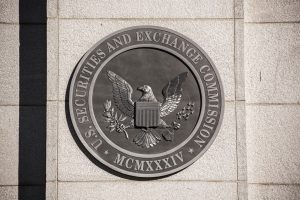 On the heels of a January 2019 announcement that it was charging nine persons with participation in a scheme that allowed them to hack into the SEC’s confidential database of public filings, commonly known as EDGAR. On February 28, the SEC named Gabriel Benincasa as its first-ever Chief Risk Officer (CRO). Although the two events have no direct causal link, they serve as useful reminders that the SEC is determined to re-emphasize its mission to ensure the smooth operation of the U.S. securities markets and to root out and punish instances of fraud and market manipulation, be it by traditional methods or where digital tools are implicated and databases are compromised. The position of CRO is a new one at the SEC. Created by SEC Chairman Jay Clayton to strengthen the agency’s risk management and cybersecurity efforts, Benincasa’s office will help to coordinate efforts to identify, monitor and address risks facing the agency.
On the heels of a January 2019 announcement that it was charging nine persons with participation in a scheme that allowed them to hack into the SEC’s confidential database of public filings, commonly known as EDGAR. On February 28, the SEC named Gabriel Benincasa as its first-ever Chief Risk Officer (CRO). Although the two events have no direct causal link, they serve as useful reminders that the SEC is determined to re-emphasize its mission to ensure the smooth operation of the U.S. securities markets and to root out and punish instances of fraud and market manipulation, be it by traditional methods or where digital tools are implicated and databases are compromised. The position of CRO is a new one at the SEC. Created by SEC Chairman Jay Clayton to strengthen the agency’s risk management and cybersecurity efforts, Benincasa’s office will help to coordinate efforts to identify, monitor and address risks facing the agency.
Creators Take Care: SCOTUS Adjusts the Timing of the Copyright Registration Tango
 Fortnite is the most popular video game in the world. So popular that it was last year’s highest earning video game, grossing more than $2.4 billion in 2018 alone. So popular, in fact, that its fans successfully convinced Sony to reverse its longstanding policy against cross-platform gaming, thus allowing PlayStation Fortniters to play with their PC, mobile and other console-owning friends. Fortnite is also free.
Fortnite is the most popular video game in the world. So popular that it was last year’s highest earning video game, grossing more than $2.4 billion in 2018 alone. So popular, in fact, that its fans successfully convinced Sony to reverse its longstanding policy against cross-platform gaming, thus allowing PlayStation Fortniters to play with their PC, mobile and other console-owning friends. Fortnite is also free.
(Un)making History: ETC, a 51% Attack and How to Change an Unchangeable Blockchain
 Back in January, news of reversed transactions on the Ethereum Classic (ETC) blockchain (little brother to the main Ethereum blockchain) made headlines and raised concerns about blockchain security. The product of a “51% attack,” these transaction reversals allowed some ETC tokens to be spent twice, a cardinal sin in cryptocurrency called a “double spend,” and the exact problem blockchains were invented to solve.
Back in January, news of reversed transactions on the Ethereum Classic (ETC) blockchain (little brother to the main Ethereum blockchain) made headlines and raised concerns about blockchain security. The product of a “51% attack,” these transaction reversals allowed some ETC tokens to be spent twice, a cardinal sin in cryptocurrency called a “double spend,” and the exact problem blockchains were invented to solve.
News of Note for the Internet-Minded – 2/25/19 – Algorithms, Terms of Service and the Death of the Password
Online platforms battle the trolls (and ad blockers); Pokemon GO! creator Niantic promises to watch things a bit more closely; blockchain is not as “unhackable” as many think; and more …
AI, Robot – Our Final Invention?
 In his 2013 book, Our Final Invention, documentary filmmaker James Barrat explores the perils and promises of artificial intelligence (AI). The book’s ominous subtitle, Artificial Intelligence and the End of the Human Era, echoes similar dire sentiments regarding the ultimate consequences of mankind’s quest for fully functioning AI, including from celebrated theorists such as Stephen Hawking (“The development of full artificial intelligence could spell the end of the human race”) and Claude Shannon (“I visualize a time when we will be to robots what dogs are to humans.”).
In his 2013 book, Our Final Invention, documentary filmmaker James Barrat explores the perils and promises of artificial intelligence (AI). The book’s ominous subtitle, Artificial Intelligence and the End of the Human Era, echoes similar dire sentiments regarding the ultimate consequences of mankind’s quest for fully functioning AI, including from celebrated theorists such as Stephen Hawking (“The development of full artificial intelligence could spell the end of the human race”) and Claude Shannon (“I visualize a time when we will be to robots what dogs are to humans.”).
Drilling for the Blockchain: Energy Commodity Trading Using Distributive Ledger Technology
 The use of blockchain and cryptocurrency platforms continues to evolve and expand into new markets. We recently highlighted the new patent issued to tZERO covering blockchain-based methods and systems to trade “digital transactional items,” so it should be no surprise that another company—UK-based VAKT—has developed a blockchain platform for energy commodity trading.
The use of blockchain and cryptocurrency platforms continues to evolve and expand into new markets. We recently highlighted the new patent issued to tZERO covering blockchain-based methods and systems to trade “digital transactional items,” so it should be no surprise that another company—UK-based VAKT—has developed a blockchain platform for energy commodity trading.
Hashing Out the Differences: Hashtag-Powered Promotion or Trademark Infringement?
 In today’s world, most businesses use hashtags to boost their brand awareness and promote their products and services on social media platforms such as Twitter, Facebook, Instagram and LinkedIn. As the saying goes, “a picture is worth a thousand words”—posting a great photo of a product with the right #hashtag, and the attention received can go from “scant” to “deluged” in moments. Such posts can promote higher customer engagement, attract more likes and new followers, and in short provide fantastic and efficient publicity for businesses.
In today’s world, most businesses use hashtags to boost their brand awareness and promote their products and services on social media platforms such as Twitter, Facebook, Instagram and LinkedIn. As the saying goes, “a picture is worth a thousand words”—posting a great photo of a product with the right #hashtag, and the attention received can go from “scant” to “deluged” in moments. Such posts can promote higher customer engagement, attract more likes and new followers, and in short provide fantastic and efficient publicity for businesses.
The USPTO Looks to Nail Down the “Abstract Idea,” Among Other Things
On January 7, the U.S. Patent and Trademark Office released new guidance for how patent examiners should evaluate patent-eligible subject matter under 35 U.S.C. § 101. In “Evaluating the Evaluation: Breaking Down New USPTO Guidance for Patent-Eligible Subject Matter,” colleagues Jack S. Barufka, Ngai Zhang, and Matthew W. Hindman examine the new guidance—and what it means for patent eligibility going forward.
Blockchain Goes Wall Street – New Issued Patent Covers Cryptocurrency Trading Platform
 With bitcoin prices rising from the dead over the last few weeks (up nearly 25% from a December 14 low), there’s a degree of renewed excitement regarding blockchain and cryptocurrency. But as general public interest rises and falls, the steady process of creating useful applications and systems for distributed ledger technology continues. The issuing of new patents is one observable part of this process, and as such, it’s worth noting that trading platform tZERO, a portfolio company of the e-commerce giant Overstock, was recently awarded a patent outlining how it may merge legacy trading systems with cryptocurrencies and digital asset technology.
With bitcoin prices rising from the dead over the last few weeks (up nearly 25% from a December 14 low), there’s a degree of renewed excitement regarding blockchain and cryptocurrency. But as general public interest rises and falls, the steady process of creating useful applications and systems for distributed ledger technology continues. The issuing of new patents is one observable part of this process, and as such, it’s worth noting that trading platform tZERO, a portfolio company of the e-commerce giant Overstock, was recently awarded a patent outlining how it may merge legacy trading systems with cryptocurrencies and digital asset technology.
News of Note for the Internet-Minded – 1/9/19 – Mostly Tales of Human Bias and Misbehavior
Thieves loot some Ethereum; chat apps and the IoT attract unwanted attention; AI detects viruses … and password sharing; and more …





